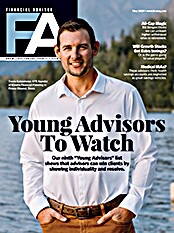U.S. public schools are stockpiling masks, hand sanitizer and plexiglass shields, racking up bills that could top $100 billion to protect children who study in actual classrooms this fall or help them learn from home.
The Dallas Independent School District, which is scheduled to open Sept. 8, has already spent $20 million on those items and protective equipment, and estimates a $50 million cost to install home internet for all students so they can log in from home.
Factor in costs such as hazard pay, and its total pandemic-protection tab may surpass $200 million. Michael Hinojosa, superintendent of the fifth-largest urban district, says it’s especially challenging because of conflicting advice from politicians and health experts.
“We deal with people’s two most prized possessions: their money and their kids,” Hinojosa said. “And they expect us to have answers. But when we keep getting mixed messages and different information we have to make different decisions.”
It will cost the average U.S. district an estimated $1.77 million in new disinfecting expenses, cleaning equipment and additional staff to be able to reopen in-person schools, according to the Association of School Business Officials International and the School Superintendents Association.
The extra expense comes to about $490 per pupil. Even if many systems, such as Chicago and Los Angeles go remote, the costs will be staggering, considering that America educates more than 50 million public school children. All told, the American Federation of Teachers estimates that safely opening in the pandemic could cost districts an extra $116.5 billion.
Controlling the spread of the virus in schools adds up in many ways. Schools are instituting staggered classroom changes, hand sanitizer stations throughout buildings, masks, temperature checks, one-way hallways and pre-packaged lunches, rather than buffet-style dining. Social distancing on buses means each one can carry fewer children and routes must be run more often.
Schools are buying electrostatic disinfectant sprayers to clean large spaces and surfaces. Orders for sprayers can take 12 weeks, or longer, to arrive, according to Sharie Lewis, director of business services & operations at Parkrose School District in Portland, Oregon. Schools are hiring more mental-health counselors, nurses and custodial staff.
To help cover virus-related expenses, Congress directed $13.2 billion to K-12 schools. But districts will need even more as states face declining revenue because of widespread shutdowns. State and city sales-tax collections fell by 12% in the second quarter, the steepest drop since 1958, according to the U.S. Commerce Department.
Then, there’s the cost of not opening schools. Single parents, workers who can’t do their jobs at home and parents with young children may account for about 24 million workers, or 15% of the labor force, Goldman Sachs economists wrote in an Aug. 2 note. Education-sector shutdowns accounted for a 2.2 percentage point decline in annualized real gross domestic product growth in the second quarter.








